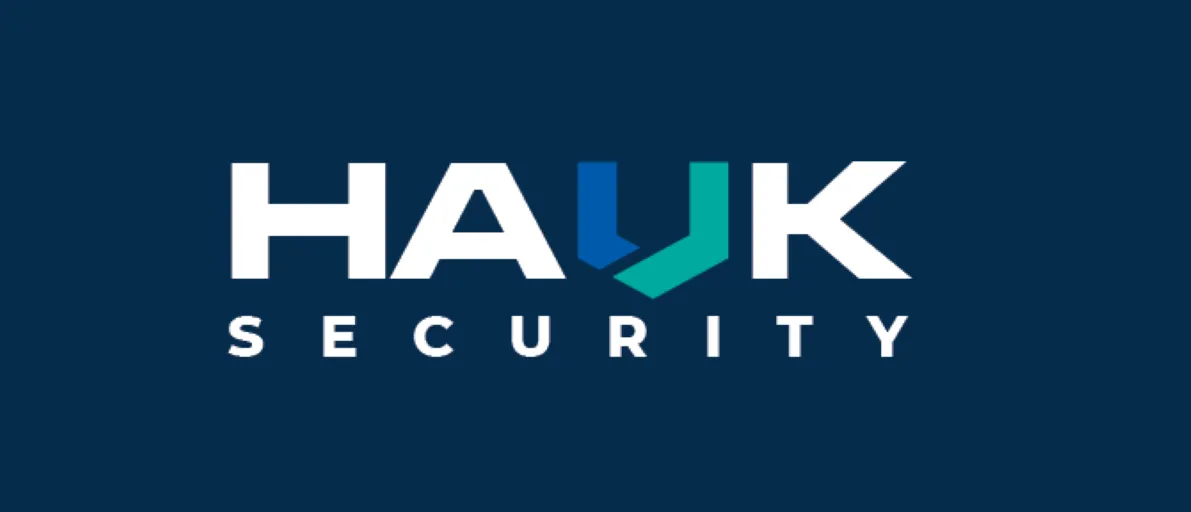Orange County, North San Diego, Riverside & Los Angeles Installation Professionals
Access Control Installation
Live Access Monitoring
.
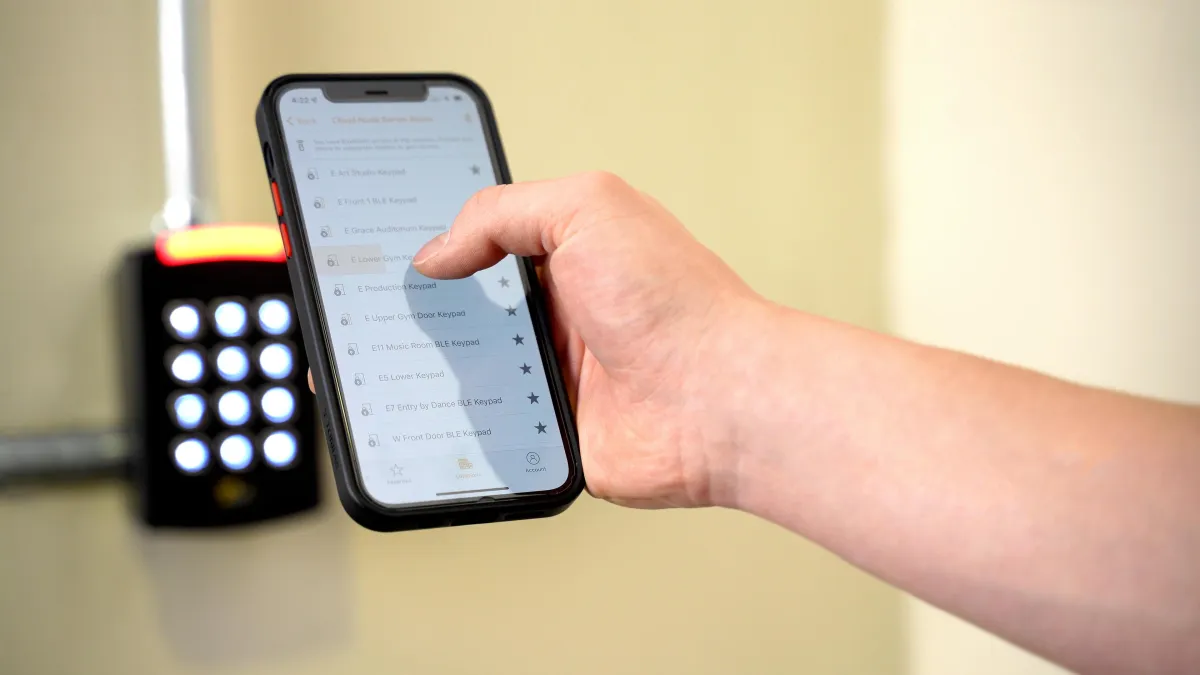
Access Control Systems are easy with a certified dealer
Access Control for Business
Connected Access Control implementation with NFC Wallets
Connected Access for All
July 26, 2024
Today’s facility managers face the challenge of deploying
connected access within buildings effectively. The goal is to enable employees
and tenants to use smartphones or smartwatches as new types of “keys” to unlock
places, spaces, and things within a facility.
The widespread availability of digital NFC wallets on major
mobile platforms – including iPhones, Apple Watches, and Android devices – has
made connected access a timely and unavoidable topic. With access credentials
in NFC wallets supported by Apple and Google, users can tap into the ease and
flexibility of using an access pass in their digital wallets, similar to how
they already handle payments, airline tickets, and loyalty programs.
To make this possible at corporations with one to multiple
sites and across commercial estate portfolios, there are a handful of practical
insights, tips, and strategies to help integrators help clients such as
facility managers, heads of real estate and security administrators implement
NFC-enabled mobile keys for seamless access.
Common vs. Best Practices
There are a series of common vs. best practices to ensure
employees and tenants can easily use their mobile devices to access buildings,
parking garages, elevators, turnstiles, lockers, amenities, and enterprise
resources, among other typical facility features.
Common practices of the past were often based on outdated
assumptions and lacked the necessary balance of creating a great user
experience while enhancing security at the same time. Today’s best practices
consider the shift away from the notion of “access control” in favor of “access
enablement,” which ensures the right people have access to the right places and
spaces, at the right time.
This new paradigm seeks to deliver on-demand, self-service
access that combines a delightful, connected access experience, automation,
stronger governance, and tighter security – all without compromise. It is the
difference between trying to control the population (legacy) and empowering
people (connected access).
In recent years, common practices of making mobile access
available using older technologies have led to inconsistent user experiences
and limited options. Consequently, many organizations have been slow to adopt
the use of smartphones or smartwatches for access.
Pitfalls to Avoid
Integrators must help facility managers understand “what not
to do” in today’s new reality of access credentials in NFC wallets, to avoid
repeating the mistakes of early adopters of Bluetooth-enabled mobile keys. Here
are a few pitfalls to avoid:
Complex authentication processes: Do not require users
to go through a complex, manual process to authenticate before being able to
use their Apple or Android device to gain access to places and spaces. A user
usually does not have the patience to receive an email with a code, then manually
type it in, and wait to complete the authentication process. That is laborious
and time-consuming. Additionally, users do not want to stop at a reception deck
to have their mobile credential authorized, which defeats the purpose of the
process.
Inconsistent and unreliable experiences: There is no
reason to expect anything less than a fast, easy, and seamless access
experience when using mobile devices. Seeing a person waving a phone or a
smartwatch at a door reader multiple times to get in is a poor experience and
should never become the norm; instead, access credentials in NFC wallets make
it possible for users to have identical fast and reliable access experiences
with their mobile device as they do with a card or keyfob.
Fragmented mobile use-cases: Avoid enabling mobile
access for just a few, limited parts of a facility, requiring employees and
tenants to have multiple credentials for access to different places and things.
This inconvenience can discourage users from using the mobile credentials. Employees
and tenants have become too familiar with this kind of scenario, which prevents
a seamless street-to-seat access journey.
Best Practices for Connected Access
Ultimately, best practices are the pathway to superior
business outcomes and exceptional user experiences. Embracing best practices
for connected access in a facility will eliminate legacy challenges and
potential misperceptions about mobile access. Some of the most important keys
to success for mobile access in a facility today include leveraging automated
onboarding and workflows, and maximizing the value of NFC access in digital
wallets for street-to-seat, connected access.
Automated onboarding: A first-class digital native
experience – such as using Apple Wallet or Google Wallet for access – is now
considered an amenity in the workplace. It is a best practice to offer
employees and tenants on-demand, self-service access to a facility, which also
increases operational and workflow efficiencies for administrators. The user
can bypass the front desk and have on-demand access to the right places,
spaces, and things at the right time. It saves time, effort, and costs, while
enhancing security and improving privacy.
The employee or tenant’s access pass is provisioned into
their digital NFC wallet the same way a person would get an airline boarding
pass – users no longer have to wait for access to be granted. They simply
download their multi-purpose workplace experience app, onboard using their
standard single sign-on…just like they do with their computer log-in or email
log-in, and add their pass to their NFC wallet. From there, they have connected
access to everything based on permissions preset by the administrator.
Leverage zero-trust principles: For administrators,
stress the importance of physical access being treated the same way as
enterprise IT access, including applying standard zero-trust principles. For
example, there should be high assurance that the person accessing a place,
space, or thing is an authenticated user with a trusted device as a
precondition for provisioning a pass with their specific permissions in their
mobile device’s NFC wallet. It is a best practice to offer a streamlined, rapid
process that emulates the logical access authentication process with a single
entry to enable access to places, spaces, and things for the desired time.
Ensure a 100% mobile access use-case: Mobile devices
should work everywhere plastic cards do; in fact, it is vital to create an
access experience that emulates the traditional contactless card experience
that users are already accustomed to. NFC technology works 100 percent of the
time, thereby giving users higher confidence in using a smartphone or
smartwatch to reliably access buildings and resources. The best practice is to
deploy NFC-based mobile credentials to be used everywhere smartcards are used –
and beyond, since employees and tenants want to use their phones for
everything. Additionally, access should be consistent across the base building
and corporate office spaces, delivering an unfettered mobile access experience.
When mobile access works everywhere for authorized users, it enables a true
“street-to-seat” user experience.
Cross-platform integration and the simplicity of an NFC
access badge in Apple Wallet and Google Wallet help create this seamless,
friction-free journey. From connected access to parking, base building
turnstiles and elevators, amenity spaces, corporate office suites, and
enterprise resources, it’s become best practice to unlock the true value of a
total, streamlined workplace experience – staying ahead of the most relevant
trends for a modern facility.
Advantages of NFC Mobile Access for Security and User Experience
These best practices are poised to shape the future of
facilities as more facility managers aim to provide users with experiences that
enrich their digital-first lifestyles, while delivering the “cool factor” of
using a smartphone or smartwatch to access spaces, places, and things.
Accordingly, the shift towards harnessing the power of these
recommended strategies begins with a move from a traditional “access control”
mindset to the new approach of connected access enablement, which has already been
proven in multi-national corporate campuses.
Beyond convenience, organizations worldwide are increasingly
recognizing the profound security benefits offered by NFC-enabled mobile
access. Devices such as iPhones, Apple Watches, and Android devices, facilitate
secure, convenient access transactions. This technology includes:
Enhanced Security: NFC technology ensures encrypted
transactions, safeguarding access data and thwarting unauthorized entry.
Combining NFC-enabled access with multi-factor authentication adds an extra
layer of security, enabling real-time remote management and revocation of
access credentials. This capability is crucial for mitigating security risks in
case of device loss or theft.
Operational Efficiencies: Automated onboarding processes
reduce manual credential issuance, cutting administrative overhead and
minimizing human error. Digital NFC wallets streamline credential management
throughout their lifecycle, ensuring up-to-date and accurate access
permissions. Transitioning to mobile access credentials also reduces costs
associated with physical cards or fobs, as digital credentials are more durable
and require fewer replacements.
User Experience: Users benefit from a seamless
transition between different spaces, from parking lots to specific office
areas, thanks to NFC credentials integrated with popular digital wallets like
Apple Wallet and Google Wallet. This integration provides a unified platform
that enhances adoption and ease of use. Mobile access credentials consolidate multiple
functionalities into smartphones or smartwatches, eliminating the need for
carrying multiple cards or fobs.
Shifting from traditional access control to connected access
enablement transforms how employees and tenants interact with their
environments. Looking ahead, the focus should be on creating secure and
productive environments. Facility managers can innovate operations to deliver
seamless, integrated experiences for all users. Embracing connected access,
leveraging technology, and prioritizing user experience are key to realizing
this vision. The era of NFC-enabled mobile access has arrived, promising to
shape the future of facility management for years to come.
Brandon Arcement is Chief Commercial Officer at
SwiftConnect.
This article originally appeared in the July 2024
issue of Security Business magazine, Security Business magazine on
LinkedIn and @SecBusinessMag
Commercial Security Products Designed in The USA
We install modern, discrete, and effective security products to ensure complete safety and satisfaction. This means covering all access points of the business. In addition to our commercial security installation, we also offer:
No matter what the scope of your project, we have the expertise, equipment, and materials to make your office or warehouse more secure than ever before.
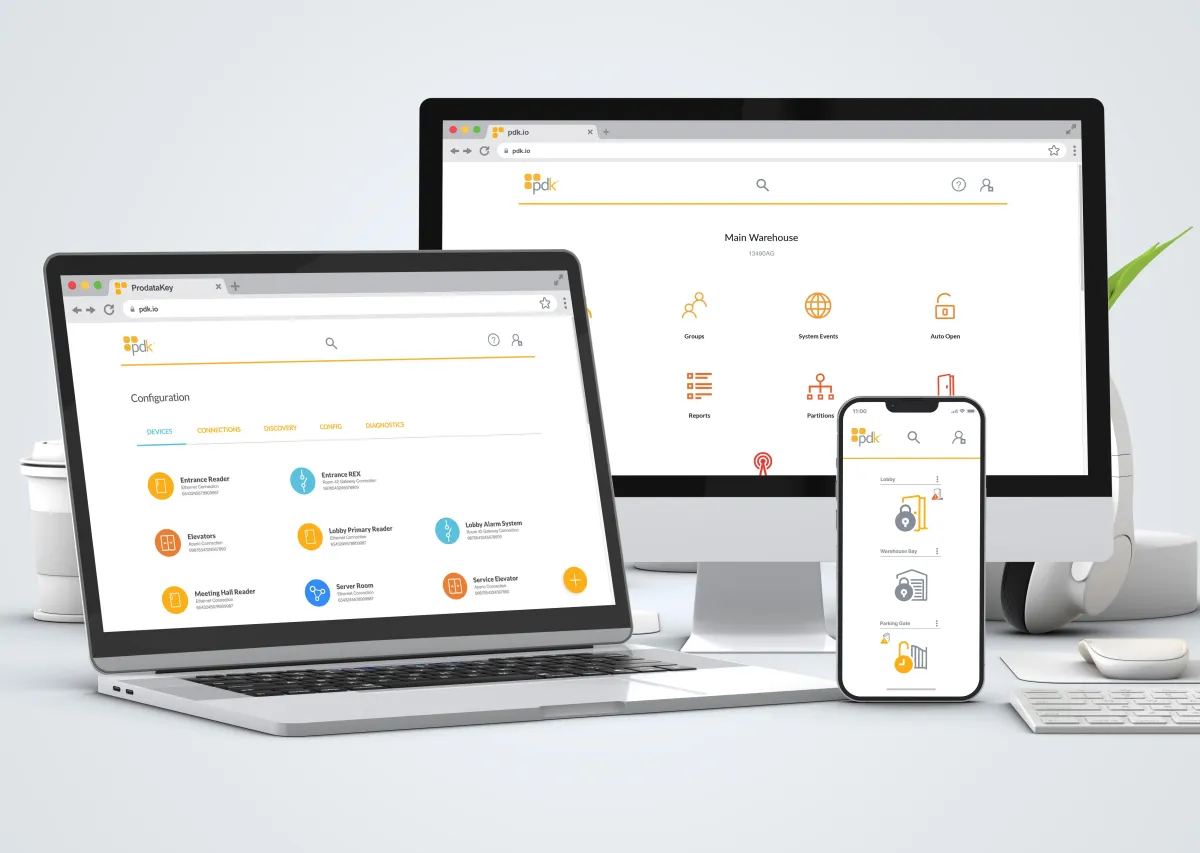

Access Control for Business Security
The PDK platform delivers a unified experience no matter what device you are managing your system from. PDK io is the easiest to use fully integrated access platform. Experience streamlined cloud management that delivers a better experience and improves your productivity. Regardless of the system size, PDK scales to your needs making access management easier than ever.
- Manage anytime, anywhere, on any device
- Automatic feature updates
- Interactive mapping screen
- Power and health system monitoring
- Real-time door and elevator status
Manage Multiple Locations: 1-app manages multiple locations
easily add new users, assign them to groups and change their access permissions
Live events: keep tabs on who's coming in and out with real time monitoring.
Instant Alerts: real time alerts of the system status
Permissions: Quickly set and change user access permissions and immediately allow or restrict user access
Partitions: Allows you to set up the system into smaller systems for restricted or allowed access at specific times.
Limitations: add doors and gate access from the cloud hub to remote buildings with the use of a repeater, we achieve 1-mile line of site range ie: 5280 feet before we add another unit for a true mesh network configuration.
SCALABILITY: if you want 2 doors or a thousand, PDK Red controllers allow the flexability to add doors at any time.
Local Security Certified Access Control Door Installer
Hauk Security access control installations are featured in business office environments, HOA (home owners associations), warehouse, and corporate buildings. If you’re searching for an access control installer in Orange County, San Clemente, Santa Margarita, Mission Viejo, Laguna Niguel, Laguna Hills, Dana Point, Laguna Beach, Newport Beach, Irvine, Lake Forest, Foothill Ranch, Tustin, Orange, Santa Ana, Contact the Hauk Security Team for a free estimate.
No matter what the scope of your project, we have the expertise, equipment, and materials to make your office or warehouse more secure than ever before.
Commercial Security Products Designed in The USA
Hauk Security is a local access control installation company in Orange County installation of modern, discrete, and effective security products to ensure complete safety and satisfaction. This means covering all access points of the business. In addition to our commercial security installation, we also offer:
•Security System Keypads
•Doorway Contact Sensors
•24/7 Live Monitoring
•Indoor and Outdoor Security Cameras
•Keyless Entry Controls
•Gate Access Controls
•Front Door Intercoms
•Ring Video Doorbells
Request Your Free Estimate
Hauk Security is here to protect your business at every point, keeping you and your staff safe at all times. To learn more about our commercial security and surveillance installation services or to request more information, give us a call today at (949) 238-1038. You can also get a quote by completing our online form.
Access Control Systems are easy with a certified installer
Connected Access Control implementation with NFC Wallets
Connected Access for All
July 26, 2024
Today’s facility managers face the challenge of deploying connected access within buildings effectively. The goal is to enable employees and tenants to use smartphones or smartwatches as new types of “keys” to unlock places, spaces, and things within a facility.
The widespread availability of digital NFC wallets on major mobile platforms – including iPhones, Apple Watches, and Android devices – has made connected access a timely and unavoidable topic. With access credentials in NFC wallets supported by Apple and Google, users can tap into the ease and flexibility of using an access pass in their digital wallets, similar to how they already handle payments, airline tickets, and loyalty programs.
To make this possible at corporations with one to multiple sites and across commercial estate portfolios, there are a handful of practical insights, tips, and strategies to help integrators help clients such as facility managers, heads of real estate and security administrators implement NFC-enabled mobile keys for seamless access.
Common vs. Best Practices
There are a series of common vs. best practices to ensure employees and tenants can easily use their mobile devices to access buildings, parking garages, elevators, turnstiles, lockers, amenities, and enterprise resources, among other typical facility features.
Common practices of the past were often based on outdated assumptions and lacked the necessary balance of creating a great user experience while enhancing security at the same time. Today’s best practices consider the shift away from the notion of “access control” in favor of “access enablement,” which ensures the right people have access to the right places and spaces, at the right time.
This new paradigm seeks to deliver on-demand, self-service access that combines a delightful, connected access experience, automation, stronger governance, and tighter security – all without compromise. It is the difference between trying to control the population (legacy) and empowering people (connected access).
In recent years, common practices of making mobile access available using older technologies have led to inconsistent user experiences and limited options. Consequently, many organizations have been slow to adopt the use of smartphones or smartwatches for access.
Pitfalls to Avoid
Integrators must help facility managers understand “what not
to do” in today’s new reality of access credentials in NFC wallets, to avoidrepeating the mistakes of early adopters of Bluetooth-enabled mobile keys. Here are a few pitfalls to avoid:
Complex authentication processes: Do not require users to go through a complex, manual process to authenticate before being able to use their Apple or Android device to gain access to places and spaces. A user usually does not have the patience to receive an email with a code, then manually type it in, and wait to complete the authentication process. That is laborious and time-consuming. Additionally, users do not want to stop at a reception deck to have their mobile credential authorized, which defeats the purpose of the process.
Inconsistent and unreliable experiences: There is no reason to expect anything less than a fast, easy, and seamless access experience when using mobile devices. Seeing a person waving a phone or a smartwatch at a door reader multiple times to get in is a poor experience and should never become the norm; instead, access credentials in NFC wallets make it possible for users to have identical fast and reliable access experiences with their mobile device as they do with a card or keyfob.
Fragmented mobile use-cases: Avoid enabling mobile access for just a few, limited parts of a facility, requiring employees and tenants to have multiple credentials for access to different places and things.
This inconvenience can discourage users from using the mobile credentials. Employees and tenants have become too familiar with this kind of scenario, which prevents a seamless street-to-seat access journey.
Best Practices for Connected Access
Ultimately, best practices are the pathway to superior business outcomes and exceptional user experiences. Embracing best practices for connected access in a facility will eliminate legacy challenges and potential misperceptions about mobile access. Some of the most important keys to success for mobile access in a facility today include leveraging automated onboarding and workflows, and maximizing the value of NFC access in digital wallets for street-to-seat, connected access.
Automated onboarding: A first-class digital native experience – such as using Apple Wallet or Google Wallet for access – is now considered an amenity in the workplace. It is a best practice to offer employees and tenants on-demand, self-service access to a facility, which also increases operational and workflow efficiencies for administrators. The user can bypass the front desk and have on-demand access to the right places, spaces, and things at the right time. It saves time, effort, and costs, while enhancing security and improving privacy.
The employee or tenant’s access pass is provisioned into their digital NFC wallet the same way a person would get an airline boarding pass – users no longer have to wait for access to be granted. They simply download their multi-purpose workplace experience app, onboard using their standard single sign-on…just like they do with their computer log-in or email log-in, and add their pass to their NFC wallet. From there, they have connected access to everything based on permissions preset by the administrator.
Leverage zero-trust principles: For administrators, stress the importance of physical access being treated the same way as enterprise IT access, including applying standard zero-trust principles. For example, there should be high assurance that the person accessing a place, space, or thing is an authenticated user with a trusted device as a precondition for provisioning a pass with their specific permissions in their mobile device’s NFC wallet. It is a best practice to offer a streamlined, rapid process that emulates the logical access authentication process with a single entry to enable access to places, spaces, and things for the desired time.
Ensure a 100% mobile access use-case: Mobile devices should work everywhere plastic cards do; in fact, it is vital to create an access experience that emulates the traditional contactless card experience that users are already accustomed to. NFC technology works 100 percent of the time, thereby giving users higher confidence in using a smartphone or smartwatch to reliably access buildings and resources. The best practice is to deploy NFC-based mobile credentials to be used everywhere smartcards are used and beyond, since employees and tenants want to use their phones for everything. Additionally, access should be consistent across the base building
and corporate office spaces, delivering an unfettered mobile access experience.
When mobile access works everywhere for authorized users, it enables a true “street-to-seat” user experience.
Cross-platform integration and the simplicity of an NFC access badge in Apple Wallet and Google Wallet help create this seamless, friction-free journey. From connected access to parking, base building turnstiles and elevators, amenity spaces, corporate office suites, and enterprise resources, it’s become best practice to unlock the true value of a total, streamlined workplace experience – staying ahead of the most relevant trends for a modern facility.
Advantages of NFC Mobile Access for Security and User Experience
These best practices are poised to shape the future of facilities as more facility managers aim to provide users with experiences that enrich their digital-first lifestyles, while delivering the “cool factor” of using a smartphone or smartwatch to access spaces, places, and things.
Accordingly, the shift towards harnessing the power of these recommended strategies begins with a move from a traditional “access control”
mindset to the new approach of connected access enablement, which has already been
proven in multi-national corporate campuses.
Beyond convenience, organizations worldwide are increasingly recognizing the profound security benefits offered by NFC-enabled mobile
access. Devices such as iPhones, Apple Watches, and Android devices, facilitate secure, convenient access transactions. This technology includes:
Enhanced Security: NFC technology ensures encrypted transactions, safeguarding access data and thwarting unauthorized entry.
Combining NFC-enabled access with multi-factor authentication adds an extra layer of security, enabling real-time remote management and revocation of access credentials. This capability is crucial for mitigating security risks in case of device loss or theft.
Operational Efficiencies: Automated onboarding processes reduce manual credential issuance, cutting administrative overhead and minimizing human error. Digital NFC wallets streamline credential management throughout their lifecycle, ensuring up-to-date and accurate access permissions. Transitioning to mobile access credentials also reduces costs associated with physical cards or fobs, as digital credentials are more durable and require fewer replacements.
User Experience: Users benefit from a seamless transition between different spaces, from parking lots to specific office areas, thanks to NFC credentials integrated with popular digital wallets like Apple Wallet and Google Wallet. This integration provides a unified platform that enhances adoption and ease of use. Mobile access credentials consolidate multiple functionalities into smartphones or smartwatches, eliminating the need for carrying multiple cards or fobs.
Shifting from traditional access control to connected access enablement transforms how employees and tenants interact with their environments. Looking ahead, the focus should be on creating secure and productive environments. Facility managers can innovate operations to deliver seamless, integrated experiences for all users. Embracing connected access, leveraging technology, and prioritizing user experience are key to realizing this vision. The era of NFC-enabled mobile access has arrived, promising to shape the future of facility management for years to come.
Brandon Arcement is Chief Commercial Officer at
SwiftConnect.
This article originally appeared in the July 2024
issue of Security Business magazine, Security Business magazine on
LinkedIn and @SecBusinessMag
No matter what the scope of your project, we have the expertise, equipment, and materials to make your office or warehouse more secure than ever before.
Local Security Certified Access Control Door Installer
We install modern, discrete, and effective security products to ensure complete safety and satisfaction. This means covering all access points of the business. In addition to our commercial security installation, we also offer:
Request Your Free Estimate
Hauk Security is here to protect your business at every point, keeping you and your staff safe at all times. To learn more about our commercial security and surveillance installation services or to request more information, give us a call today at (949) 238-1038. You can also get a quote by completing our online form.
PDK Access control partner


Secure Your Business
- Entry to Level 3 Security Installation
- 24/7 Live Monitoring in real time
- Touchscreen/Keypad/Mobile App Control
- Access Control Doors
- Motion exit "REX" request to exit button
- Request a Free Security Assessment Today!
Have Security Access Control installer
.
Hauk Security access control installations are featured in business office environments, HOA (home owners associations), warehouse, and corporate buildings. If you’re searching for an access control installer in Orange County, San Clemente, Santa Margarita, Mission Viejo, Laguna Niguel, Laguna Hills, Dana Point, Laguna Beach, Newport Beach, Irvine, Lake Forest, Foothill Ranch, Tustin, Orange, Santa Ana, Contact the Hauk Security Team for a free estimate.
No matter what the scope of your project, we have the expertise, equipment, and materials to make your office or warehouse more secure than ever before.
Commercial Security Products
Designed in The USA
We install modern, discrete, and effective security products to ensure complete safety and satisfaction. This means covering all access points of the business. In addition to our commercial security installation, we also offer:
•Security System Keypads
•Doorway Contact Sensors
•24/7 Live Monitoring
•Indoor and Outdoor Security Cameras
•Keyless Entry Controls
•Gate Access Controls
•Front Door Intercoms
•Ring Video Doorbells
Request Your Free Estimate
Hauk Security is here to protect your business at every point, keeping you and your staff safe at all times. To learn more about our commercial security and surveillance installation services or to request more information, give us a call today at (949) 238-1038. You can also get a quote by completing our online form.
Recent Alarm and Security Camera Projects
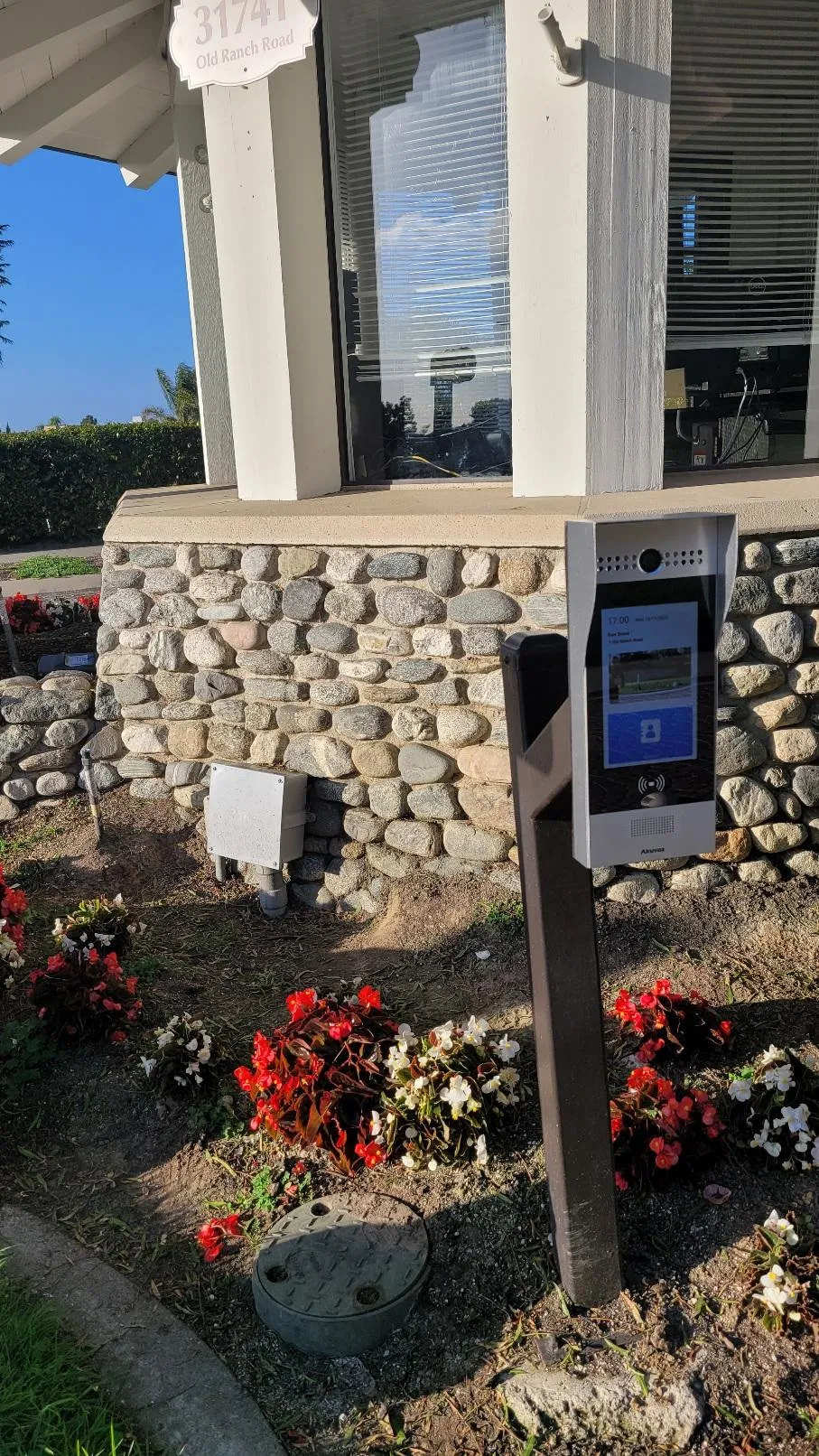
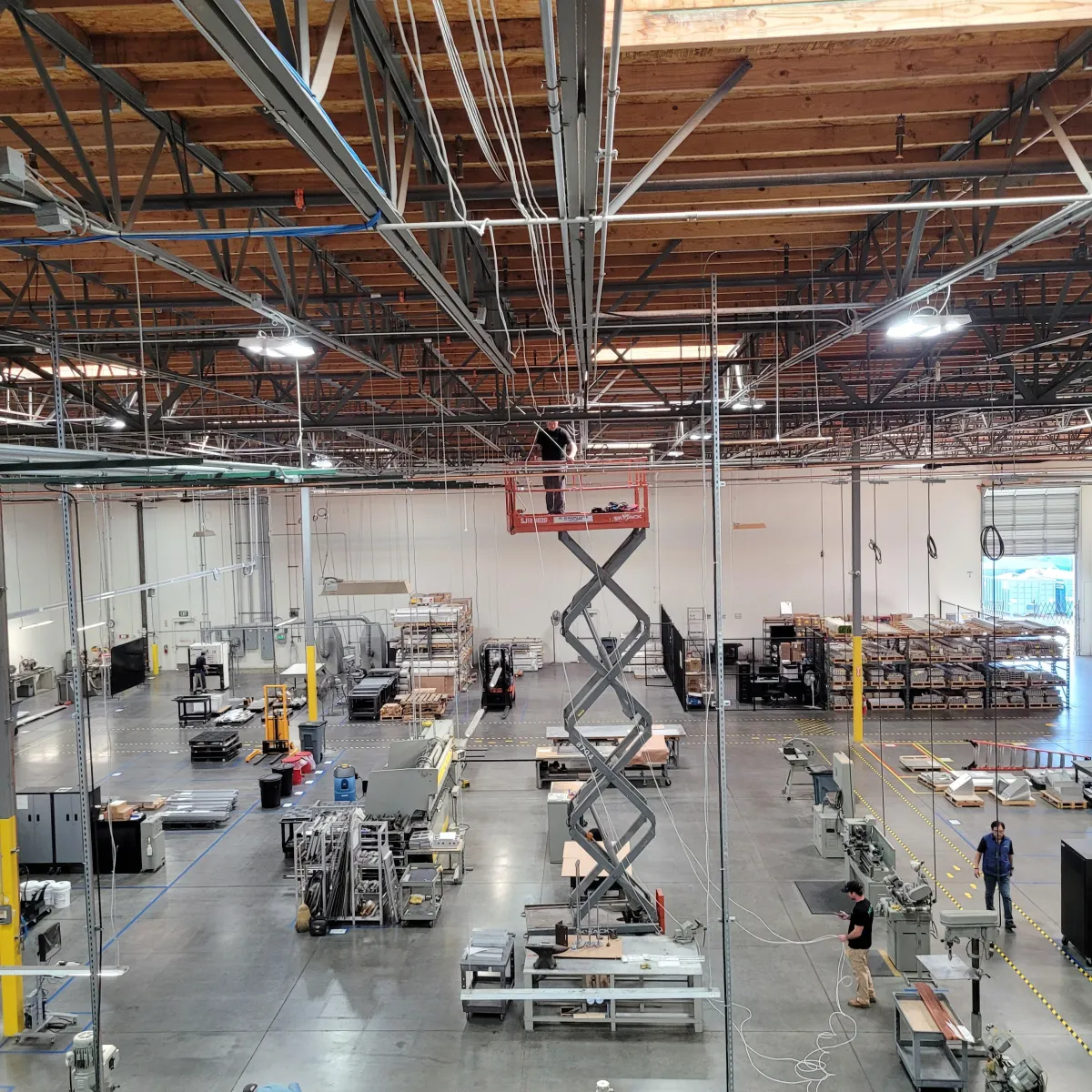
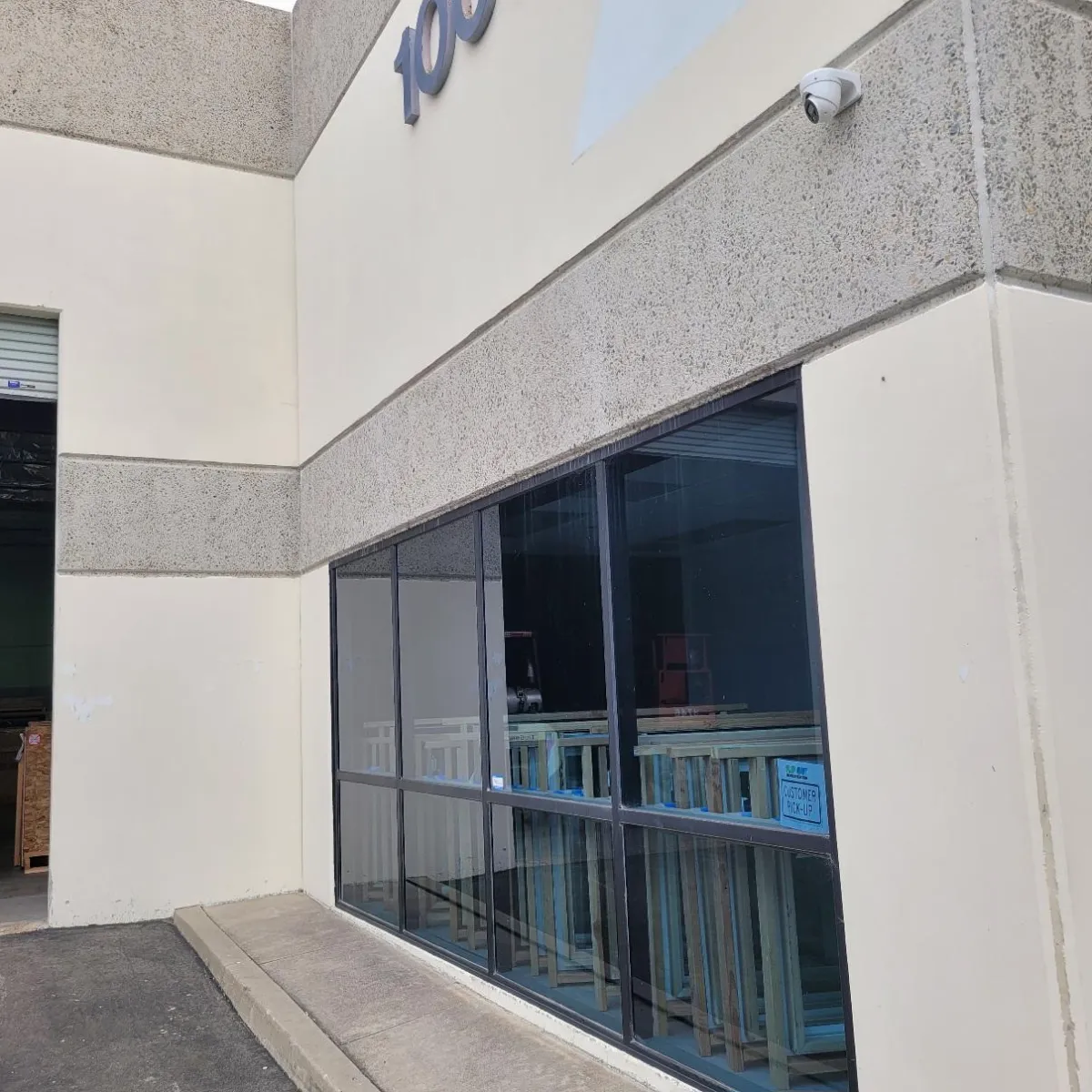
Brilliant Designs, Trusted Functionality
At Hauk Security, we take pride in offering custom-designed security products that are tailored to meet the unique needs of our customers. From commercial alarms and motion sensors to intercoms and access controls, we have the expertise to make your place of business as secure as possible in a single day. Our security alarm solutions are not only designed to provide you with the best possible protection, but also to offer ease of use and convenience.
Recent Alarm and Security Camera Projects



Brilliant Designs, Trusted Functionality
At Hauk Security, we take pride in offering custom-designed security products that are tailored to meet the unique needs of our customers. From commercial alarms and motion sensors to surveillance cameras, intercoms and access controls, we have the expertise to make your place of business as secure as possible in a single day. Our security alarm solutions are not only designed to provide you with the best possible protection, but also to offer ease of use and convenience.

Hauk Security Reviews
From People Like You
Hauk Security - Commercial Installation
Our Hours
Monday – Friday: 9:00 AM – 7:00 PM
Saturday: 9:00 AM - 5:00 PM
Sunday: Closed
Our Service Areas:
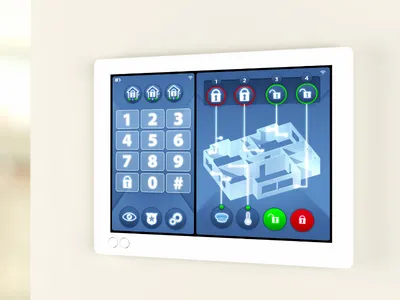
Newport Beach, Laguna Hills, Laguna Woods, Laguna Niguel, San Juan Capistrano,
Lake Forest, Dana Point, San Clemente, Mission Viejo, Laguna Beach, Santa Margarita, Carlsbad, Ladera Ranch, Irvine, Tustin, Costa Mesa, Anahiem, Santa Ana, Orange County

Hauk Security Reviews
From People Like You
Hauk Security - Commercial Installation
Our Hours
Monday – Friday: 9:00 AM – 5:00 PM
Saturday: 9:00 AM - 12:00 PM
Sunday: Closed

Our Service Areas:
Newport Beach, Laguna Hills, Laguna Woods, Laguna Niguel, San Juan Capistrano,
Lake Forest, Dana Point, San Clemente
Start Feeling More
Secure About Your Business
Call (949) 238-1038
Start Feeling More
Secure About Your Business
Call (949) 238-1038
Contact Us
dhauk@hauksecurity.com
32565 B Golden Lantern, STE 233
Dana Point, CA 92629 USA
Service Hours
Monday - Friday: 9:00 AM - 5:00 PM
Sunday: Closed
Social Media
Automation Control Store, LLC
Contractor License: 1082835 - Bond: 100611608
Insurance by: Liberty Mutual
HSS Electronic Security, LLC ACO7968
Powered By: MAT Tech Specialties
Contact Us
Service Hours
Social Media
Monday - Friday: 9:00 AM - 7:00 PM
Saturday: 9:00 AM - 5:00 PM
Sunday: Closed
2026 | Hauk Security | All Rights Reserved
Automation Control Store, LLC
Contractor License: 1082835 - Bond: 100611608
Insurance by: Liberty Mutual
HSS Electronic Security, LLC ACO7968
